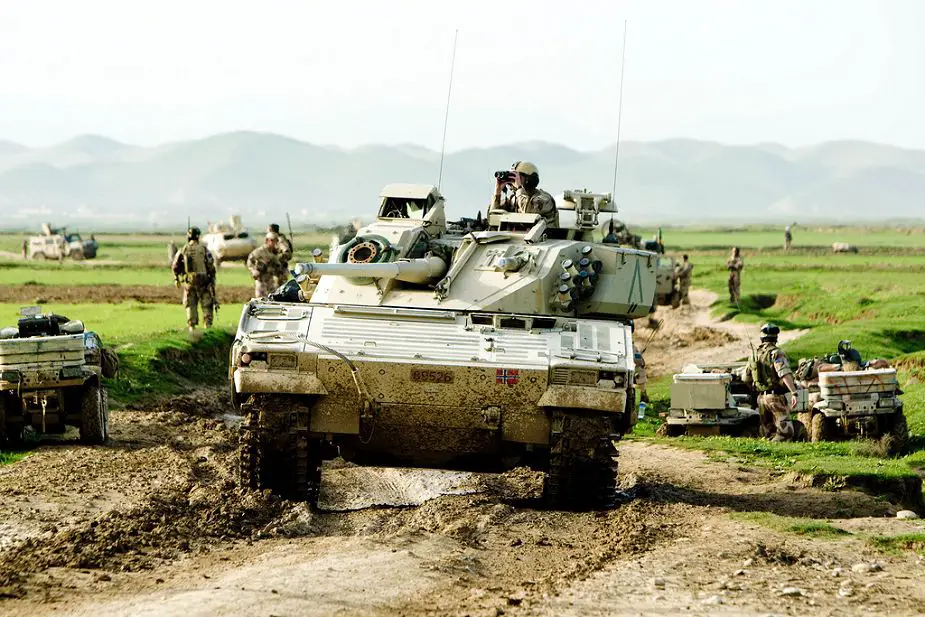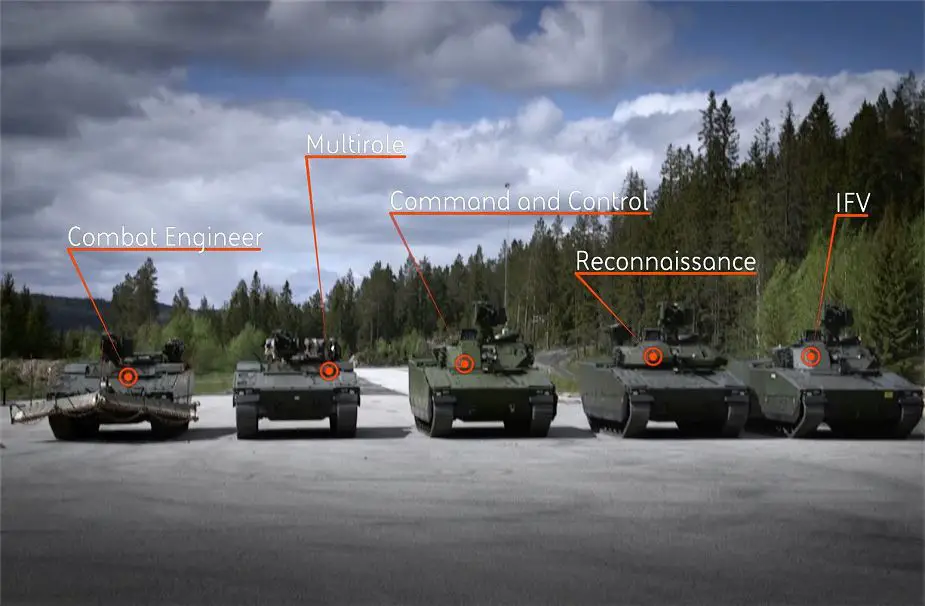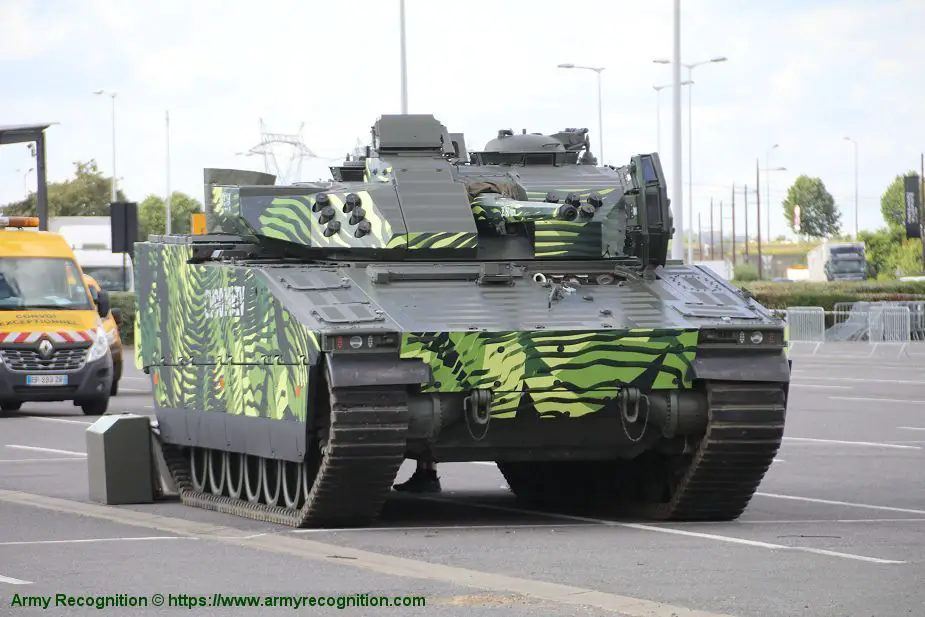The CV90 Club represents the seven countries that operate the CV90 IFV Infantry Fighting Vehicle. Some are part of NATO, others are not. But they take part in two days of intense yet collaborative meetings with one common goal: Working together to help make the CV90 family of vehicles continuously better for warfighters.” This could be anything from cost effectively adding new capabilities for addressing emerging threats and requirements, or ways to pool resources to support lifecycle sustainment like upgrades and spares.

Norwegian army CV90 armed with 30mm automatic deployed in Afghanistan. (Picture source Wikimedia)
Every year BAE Systems hosts representatives from the group of nations who operate the CV90 to share information that helps continuously evolve the Infantry Fighting Vehicle’s capabilities as an advanced and affordable combat vehicle.
The value the CV90 Club and its System Development Board (SDB) bring is not hard to grasp. They simply share the collective knowledge of the first-hand experience of actively operating and maintaining the Infantry Fighting Vehicles. Sharing this knowledge in this forum benefits all of the user nations in terms of optimizing CV90 operations while also helping BAE Systems enhance the vehicle’s capabilities over time.
This approach takes full advantage of the CV90’s modular systems architecture that gives it the flexibility and adaptability needed to cost-effectively add new technologies and capabilities as seamlessly as possible. There are 15 variants of the CV90.
One of the most valuable innovations that arose from these meetings was deploying the vehicles on rubber tracks reducing vibrations and consequently improving reliability and crew comfort. The group studied the potential and helped implement the rubber track system now fielded on the Norwegian Army’s version of the vehicle, and the idea has drawn a great deal of interest from other nations.
A big topic this year was the integration and test firing of an anti-tank-guided missile over the winter using a Rafael Advanced Defense Systems SPIKE-LR for the first time late last year, adding yet another lethal capability to the vehicle’s highly diversified mission sets. This demonstration was welcomed by the group and could lead CV90 operators to add the capability in the years ahead. In addition, the modularity of the CV90 was discussed and a walk-through of the wide range of CV90 specialist vehicles was presented. The CV90 is more than an IFV and the strength of variants provides the power of combined arms for current and future users.

The CV90 is a wide range of combat vehicle that can be configured to perform different types of missions (Pictures source BAE Systems)
The CV90 is a family of Swedish tracked combat vehicles designed by Sweden's Defense Materiel Administration (Försvarets Materielverk, FMV), Hägglunds and Bofors during the mid-1980s and early 1990s and entered service in Sweden in the mid-90s. The CV90 platform design has continuously evolved in steps from Mk0 to current MkIV with advances in technology and in response to changing battlefield requirements. The Swedish version of the main infantry fighting vehicle is fitted with a turret from Bofors that is equipped with a 40 mm Bofors autocannon. Export versions are fitted with Hägglunds E-series turrets, armed with either a 30 mm or a 35 mm Bushmaster autocannon.
The CV90 tracked chassis can be fitted with different types of weapons stations armed with 30 or 40mm automatic cannon as well as 120mm cannon to provide fire support vehicle with a total weight of less than 30 tons.
The CV90 can be also configured in a wide range of variants as a command post, mortar carrier, anti-aircraft system, artillery observation vehicle, recovery vehicle and more.

The CV90 Mk IV is the latest generation of IFV Infantry Fighting Vehicle in the family of CV90 (Picture source Army Recognition)
The CV90 Mk IV is the fifth-generation combat-proven Infantry Fighting Vehicle based on the CV90 family. Mk IV represents the next step in the evolution of the CV90 concept. Building on a proud legacy of best-in-class mobility and survivability spanning more than two decades, the CV90 Mk IV brings unrivaled technological capabilities and flexibility to today’s complex battlefield. The CV90 Mk IV was born out of a research and development program performed by BAE Systems to incorporate feedback from the seven nations that currently use the CV90 platform. CV90 Mk IV has many new improvements in terms of mobility, protection, and firepower.
The vehicle is fitted with the D series modular turret which can be armed with different types of armament, from 30/40-mm and 35/50-mm automatic cannons up to 120-mm smooth-bore tank cannon. The second armament can include Spike LR or other anti-tank guided missile launchers and a 7.62 mm coaxial machine gun. For the CV 90 Mk IV the coaxial machine gun is mounted to an independent pod located on the left side of the turret. This weapon pod can be armed 40mm automatic grenade launcher, 7.62mm machine gun or laser weapon. The right side of the turret is fitted with two anti-tank missile launchers stored under armor in road position and elevated from inside of the turret to perform fire operations. This storage box can be replaced to host UAV or other observation or reconnaissance devices.
The CV90 Mk IV is of all-welded steel armor construction. The CV90 basic armor provides all-round protection against 14.5 mm armor-piercing rounds. Armor protection over the frontal arc is classified, but all models from CV90 and later are said to be protected against 30 mm APFSDS (Armor-piercing fin-stabilized discarding sabot) ammunition.
The CV90 Mk4 can be also fitted with the Israeli-made Iron Fist APS designed by Israel Military Industries (IMI) mounted on the roof of the turret consisting of two launchers of explosive projectile interceptors. The sensor suite of the APS provides a long-range real-time 360º panoramic view of the vehicle’s vicinity and provides the vehicle with the capability to react and counterattack at no time. It provides 360° coverage protection in high elevation angles.














